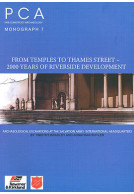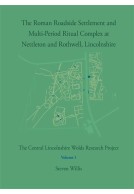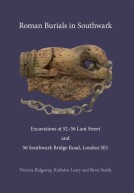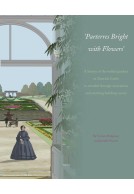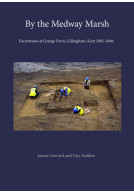Google Books previews are unavailable because you have chosen to turn off third party cookies for enhanced content. Visit our cookies page to review your cookie settings.
A Bath House, Settlement and Industry on Roman Southwark's North Island (Hardback)
Excavations along the route of Thameslink Borough Viaduct and at London Bridge Station
Imprint: Pre-Construct Archaeology
Series: Thameslink Monograph Series
Pages: 518
ISBN: 9780995663626
Published: 1st July 2019
Script Academic & Professional
Series: Thameslink Monograph Series
Pages: 518
ISBN: 9780995663626
Published: 1st July 2019
Script Academic & Professional
You'll be £30.00 closer to your next £10.00 credit when you purchase A Bath House, Settlement and Industry on Roman Southwark's North Island. What's this?
+£4.99 UK Delivery or free UK delivery if order is over £40
(click here for international delivery rates)
Order within the next 7 hours, 42 minutes to get your order processed the next working day!
Need a currency converter? Check XE.com for live rates
(click here for international delivery rates)
Order within the next 7 hours, 42 minutes to get your order processed the next working day!
Need a currency converter? Check XE.com for live rates
The Thameslink Project, a rail infrastructure upgrade extending from Blackfriars Station in the west to London Bridge Station along the course of the New Borough Viaduct provided the opportunity to investigate the archaeology of a broad swathe of the north island of Roman Southwark, extending over Guy’s Channel and onto Cotton’s Wharf Eyot to the East. This monograph presents the archaeological sequence encountered, set alongside themed discussions which focus on aspects of the settlement’s development, chronology, infrastructure and economy, while specialist artefactual and ecofactual sections present the significant and extensive finds assemblages in detail.
Drawing together the results of geoarchaeological boreholes, excavation, finds and environmental analysis, the results have revealed details of the landscape, channels and foreshore of an area south of Cotton’s Wharf Eyot transforming our understanding of this part of the buried landscape. The information has provided details of the development and occupation of Roman Southwark’s north island including construction of early clay and timber buildings, followed by extensive burnt horizons, interpreted as the residues of the Boudican revolt. By the late 1st century most areas had been redeveloped, with many well-appointed new buildings constructed in stone.
A substantial masonry bath house represents one of the most significant findings of the project as a whole. The archaeological remains of this nationally important monument, which have been largely preserved in situ and were scheduled on 31 March 2015, epitomise what may remain to be discovered about this area of Londinium, despite the extensive excavation carried out to date.
Other titles in the series...
Other titles in Pre-Construct Archaeology...









